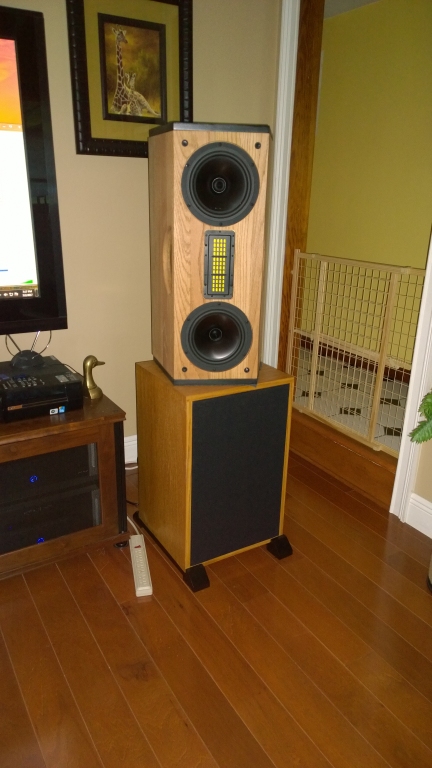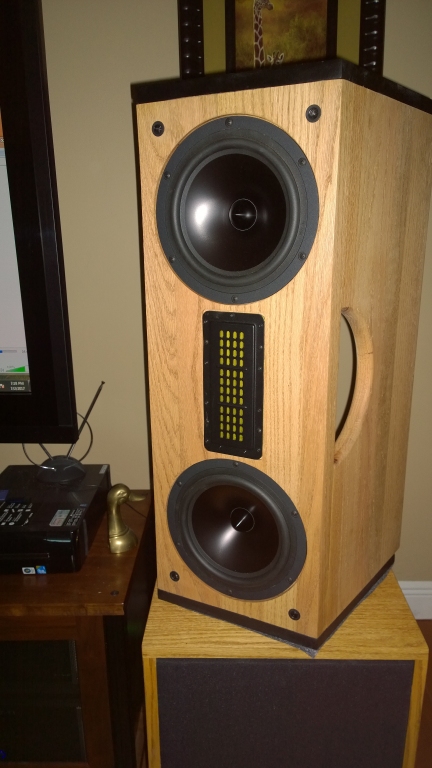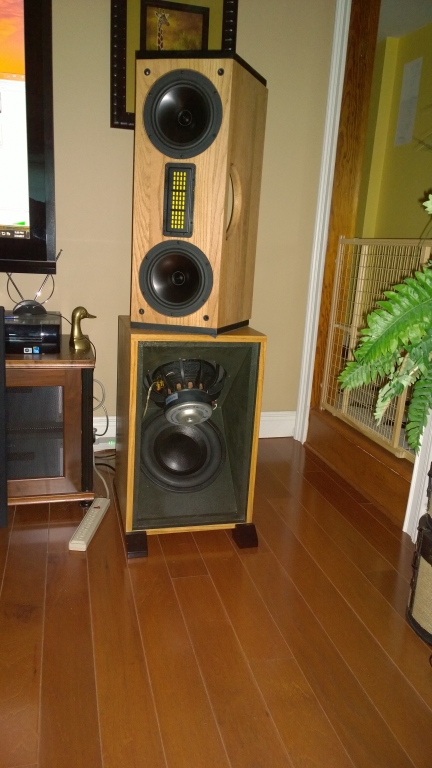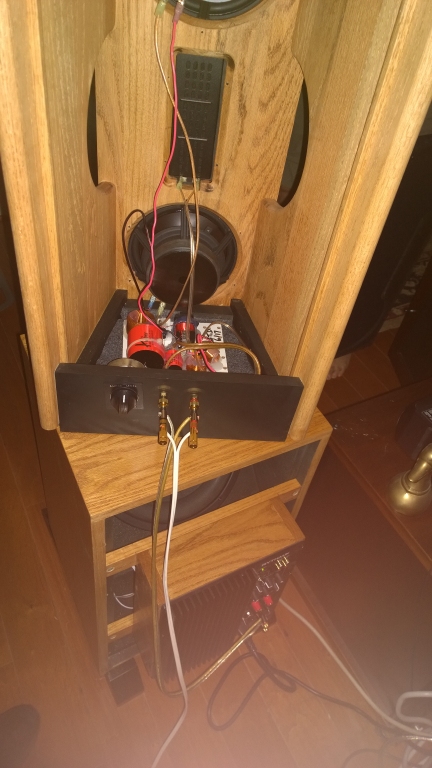| From Planar Asylum posting: Happy 4th, DIY Neo8+Open Baffees PLUS a Fat Tire! Posted July 4, 2017 More Photos, plus comments below the photos are extra information, not posted.
Additional Comments (not posted)
Back in March, during my first visit, most of the evaluation music was played via a pair of B&W Matrix speakers. They delivered stereo at the high quality levels that I've come to expect from them. Importantly, these B&W's did this despite being forced to play on a short wall which included wide, off-center openings to adjacent rooms. It was also a testament to good tweaking and proper driving power. However, physics will not be denied; the sound stage suffered due to this uneven wall. Even so, Aceinc's Emotiva XPA1 monos helped the B&W's to hold whatever ground they could, which was way more than I expected. Well, this time, again, Aceinc had placed these new dipole/open baffle speakers in the very same spot! If you know a little about them, you know these type of speakers can be about as close as you get to some key attributes and behaviors in planars -- though using other types of drivers, mainly cones. Yet, for the very same reasons, they are almost as reactive to room placement. I braced for a bit of a disappointment. However, these little beasts sounded
far more in command of the stage space than the Matrix had done
months earlier...and they did so while staying unbelievably more
cohesive. They were not a Linkwitz Orion, much less a well-placed
pair of Maggies in their command of 3D space, which they
totally lacked against this fiendishly unhelpful wall. But still,
their sound stage width and depth were admirable, and quite
endearingly presented...not too shabby! And darn it! Some older models of large Maggies have had more trouble with the ribbon/Mylar transition. Amazing when you consider that it integrates that Neo 8 CLONE driver doing the honors in the treble zone. To be sure, the pitfalls of using such a driver HAD to be dealt with. The compromises and choices made do show. The top end is not what I would have liked in harmonic extension, but it NEVER offended and almost always stayed tunefully in sync, a neat Gestalt experience. Now, Maggies owners, few of us have the impressively realistic metallic crash cymbal strikes & resulting harmonics that the Neo 8 (clone) drivers delivered in this system. The closest I've heard to it was from older ribbon-tweeter Maggies and a few "good "aluminum dome tweeter box speakers. On the aluminum tweeters, it was not a "great experience", simply attention-grabbing, because other drivers stay quite behind. With the older ribbon Maggies I heard, it sounded quite nice - perhaps somewhat constrained, but clean...yet approaching a loss of cohesiveness with the Mylar. (Recent ".7" ribbons hold well at higher SPL.) On Aceinc's system, it was unabashedly realistic and undistorted...except that, like with the older ribbons it starts to leave its partners behind. Not a bad trade-off for either the ribbon Maggies or this system. It was probably the only loss of driver seamlessness that I perceived as approaching. The 8" drivers probably have solid mid-low coverage. Clarity is at least better than average and coloration -- whatever it may be -- is not easily heard. To the extent that overlap with the Neo 8 clones is happening, there is neither tonal evidence of it, nor beaming, nor combing effect artifacts. At my listening spot there was a wider range of body, head and ears (pivot, turn or side-to-side) movement allowed compared to most Maggies. Definitely more than what I thought the Neo 8 + cones would allow. Yet, some of the room geometry may be hiding these issues, if they exist, and combing effects would be more evident in -- ironically -- a more symmetric environment? Hard to tell; but there are baffle & other box features that Aceinc included to avoid some pitfalls, which may be helping. At the lowest end of the scale, copious amounts of musical bass -- which never sounded stressed or distorted -- filled the large room surprisingly well for such an open-baffle design. The plate amps also kept the pace, impulse and timing proper (overall seamlessness was obviously being helped by them) About the only thing I can remember an Orion doing better was in keeping rich instrumental textures even at their extreme lows (at reasonable levels). Sure, tune some Maggies for the task and things can work even better for retaing instrumental textures (if not tied to dynamic sub/woofers). Which does remind me. You can watch an action movie with this kind of bass implementation. It may need to call the fuller subs -- which he has but were off -- for help in the subsonics and even somewhere in the upper 20's. But it won't be "boring" without them subwoofers, at all. Not bad! Regardless of what the final design
tweaks turn out to be like (Aceinc is still tuning), the system
provides some interesting perspectives for us tweakers here:
|



